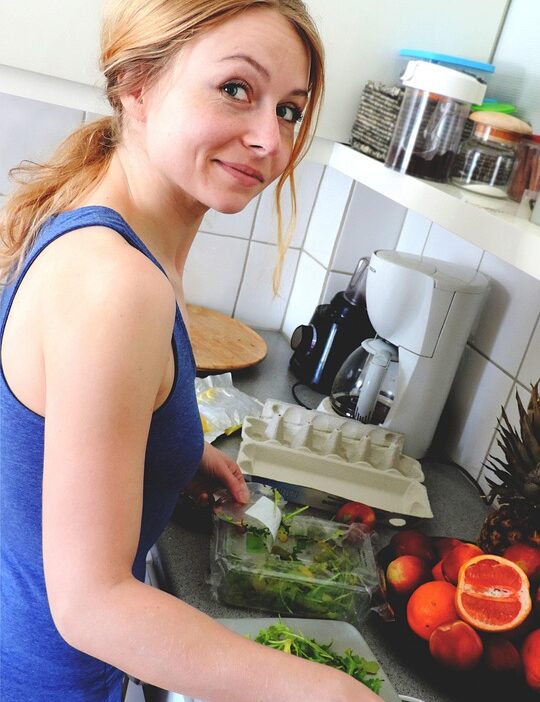In recent years, the culinary landscape has undergone a transformation, giving rise to the home chef phenomenon. Encouraged by a desire for healthier eating, the popularity of cooking shows, and advancements in technology, more individuals are donning the apron and rediscovering the joy of cooking at home. This article explores the trends shaping the rise of the home chef and what to watch for in the coming years.
1. The Home Cooking Revolution
The COVID-19 pandemic catalyzed a movement back to the kitchen, as people sought comfort and creativity during uncertain times. With restaurants shuttered and social gatherings limited, individuals turned to home cooking not just as a necessity, but as a means of self-expression and relaxation. This revolution has spurred a generation of cooks who strive to perfect their culinary skills, experiment with new recipes, and share their creations on social media platforms like Instagram and TikTok.
2. Plant-Based Eating
The surge in plant-based diets is another significant trend impacting home chefs. As concerns over health, sustainability, and animal welfare grow, more people are incorporating vegetarian and vegan meals into their diets. Home chefs are increasingly looking for innovative ways to prepare fruits, vegetables, legumes, and grains, leading to a vibrant array of plant-based cookbooks and online resources. Trendy dishes such as jackfruit tacos or chickpea “tuna” salad highlight the creativity and versatility of plant-based cooking.
3. Meal Kits and Home Delivery Services
To streamline the cooking process, meal kits and grocery delivery services have become pivotal for the home chef. Companies like Blue Apron, HelloFresh, and Sun Basket offer pre-portioned ingredients and easy-to-follow recipes tailored to various dietary preferences. This convenience allows novice chefs to build confidence while reducing food waste. As the sector matures, we can expect more niche offerings around specialty cuisines, dietary restrictions, and gourmet alternatives, making home cooking accessible to everyone.
4. Ethnic Cuisine Exploration
Another trend is the growing interest in global cuisines. Home chefs are increasingly adventurous, eager to explore flavors from around the world, from Thai curries to Jamaican jerk chicken. This curiosity about different cultures is reflected in the popularity of cooking classes, food blogs, and videos that focus on international dishes. Furthermore, the availability of spices and ingredients from ethnic grocery stores online allows home chefs to authentically recreate these dishes in their own kitchens.
5. Cooking with Technology
The integration of technology into cooking has redefined the home chef experience. Smart kitchen gadgets, such as air fryers, sous-vide machines, and instant pots, are revolutionizing how we prepare food. Apps and smart devices also provide step-by-step cooking guides, meal tracking, and nutrition insights. Virtual cooking classes have surged in popularity, allowing chefs to learn from culinary masters while enjoying the comfort of their own kitchens.
6. DIY Fermentation and Preservation
One of the most exciting trends among home chefs is the resurgence of traditional culinary practices such as fermentation and preservation. Interest in gut health has sparked curiosity about fermented foods like kimchi, sauerkraut, and kombucha. In addition, home canning and pickling are making a comeback as chefs seek to retain the flavors of seasonal produce. The ability to control ingredients and create unique flavors appeals to the modern home chef seeking authenticity in their cooking.
7. Mindful and Sustainable Cooking
As awareness of climate change and sustainability grows, home chefs are becoming more mindful of their food choices. This trend includes opting for local, seasonal produce, and reducing food waste. Many home cooks now prioritize sourcing ingredients from farmers’ markets or community-supported agriculture (CSA) programs. This conscious approach to cooking not only supports local economies but fosters a deeper connection to the food they prepare.
Conclusion
The rise of the home chef signifies a broader cultural shift toward cooking as a form of self-care, creativity, and community. As these trends continue to evolve, we can expect to see more individuals embracing the kitchen, experimenting with flavors, and finding joy in the ritual of preparing meals at home. Whether a seasoned cook or a beginner, the journey offers endless possibilities for exploration, personal expression, and a deeper appreciation of food. As we look to the future, these trends will surely shape the next generation of home chefs, making cooking not just a necessity, but a celebrated art form.



